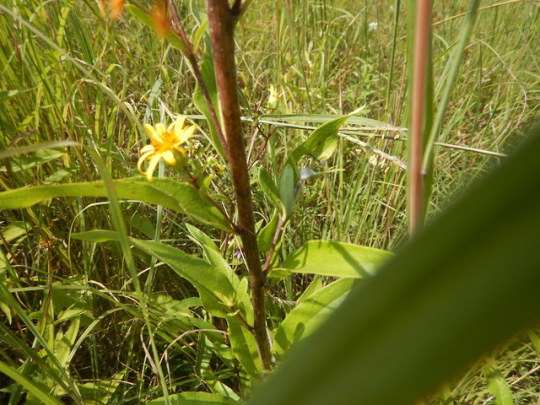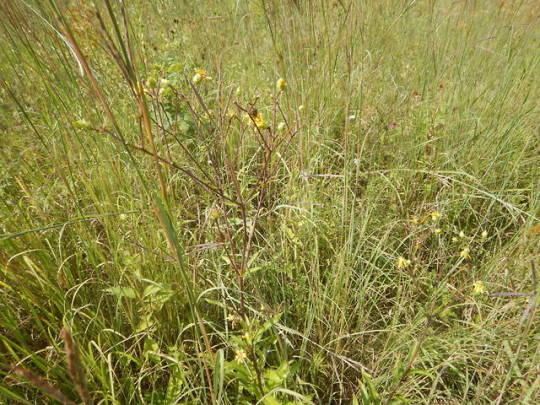#silphium asteriscus
Explore tagged Tumblr posts
Video
n3_w1150 by Biodiversity Heritage Library Via Flickr: Curtis's botanical magazine.. London ; New York [etc.] :Academic Press [etc.]. biodiversitylibrary.org/page/436910
#Botanical illustration#Botany#Periodicals#Pictorial works#Plants#Ornamental#Missouri Botanical Garden#Peter H. Raven Library#bhl:page=436910#dc:identifier=http://biodiversitylibrary.org/page/436910#BHLCurtis#WomeninScience#HerNaturalHistory#Anne Henslow Barnard#illustrator:wikidata=Q22017269#Q22017269#taxonomy:family=Asteraceae#flickr#silphium lanceolatum#silphium asteriscus#scientific illustration#starry rosinweed
2 notes
·
View notes
Photo




Hmmm is that Silphium trifoliatum, whorled rosin weed, growing in acidic volcanic sand substrate in Wichita short grass prairie. A bit unusual and if so it would be considerably disjunct and also depauperate. If you look you’ll notices wider leaves(really they are about the same width just true S. trifoliatum is conduplicate (taco’d/folded up) where as these are almost recurved(bent down) or flat), the petioles seem off( bit shorter), the stem color is off(green vs red), and the ligules(daisy rays) are wider and shorter than they should be for Silphium trifoliatum, branching capitulescence of Silphium trifoliatum is pretty noticeable(why I think they are showier.) and this one is just forming three forks on lower capitulescence, and the population also seems somewhat clonal too. The real reason for all of this is that this is a var. of a showier(depending on who you ask because I disagree tbh but if its suggested as a helpful thing in keys it may help in the field) species known for inhabiting coastal regions and shortgrass prairies. If anything I agree with the individual capitulum’s being showier.
True Silphium asteriscus var. trifoliatum, growing in the bottomlands near one of many Volcanic lakes, in mixed savannah-scrub habitat.
Whorled Starry Rosinweed.
As a comparison, here is Huffman prairie ecotype of true Silphium trifoliatum, red stemmed, conduplicate, pretty darn branched. less showier capitulum due to size.


#silphium#silphium trifoliatum#silphium asteriscus#silphium asteriscus var. trifoliatum#botany#wildflowers#prairie#prairie core#prairiecore#meadowcore#cottagecore#cottage core#plantblr#ohio#ok#oklahoma
61 notes
·
View notes
Photo

Silphium asteriscus
I feel like its not enough to just look into a prairie remnant no matter how small it is. There is always something hiding waiting to surprise you. I didn’t know we had common rosin weed, but there are a few plants near the top of the mound that for the longest time I just assumed where the whorled rosinweed.
13 notes
·
View notes
Photo




Silphium asteriscus
Starry Rosin Weed
Adena Mound Prairie
11 notes
·
View notes
Photo



Silphium trifoliatum
is much more common along with its compass plant S. laciniatum and tall rosin weed, S. integrifolium. then the S. asteriscus. Unfortunately for this vestige of a southern prairie pocket in what was otherwise prairie less unglaciated Ohio River Valley, no remnants of the Prairie Dock were located in this area, instead, it was introduced to the rest of Glenwood Gardens in their reconstructions much later. Cincinnati, isn’t exactly known to have any pocket prairies left, or even open woods(very few remnant open woods remain). What was a remnant by connectivity and strange preservation alone, Electric/railway, had been completely destroyed by invasive species in most cases by the early 90′s. With that said, Hamilton co. is the only county in Ohio were you can still find both Trifolium reflexum and Trifolium stolonifera near eachother in open woodland habitat, demonstrated by Daniel Boone aka “Carya Guy”, “Weatherman”, or the “Clover Kid”. If you get a chance go check him out on instagram @polyman58.
16 notes
·
View notes